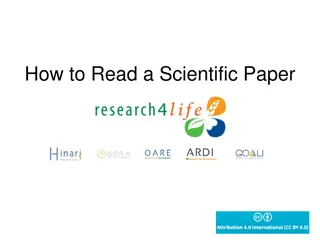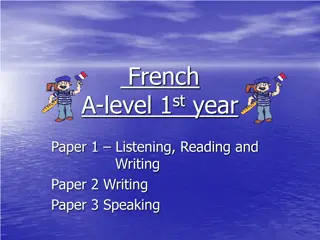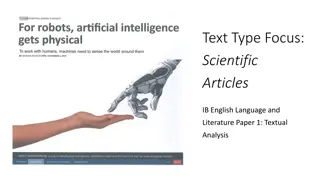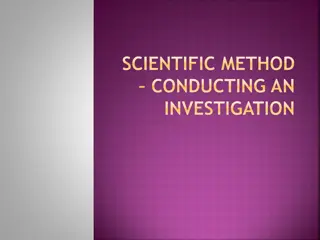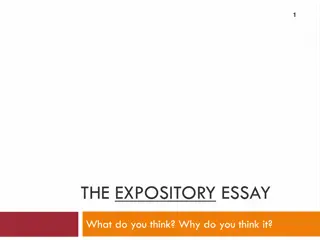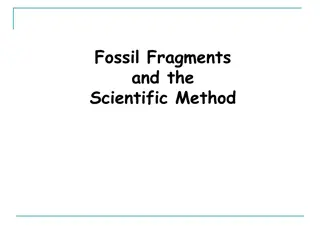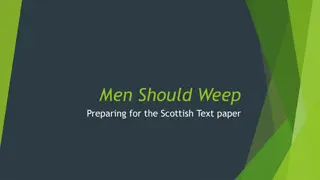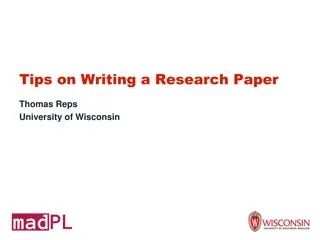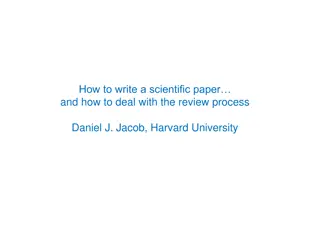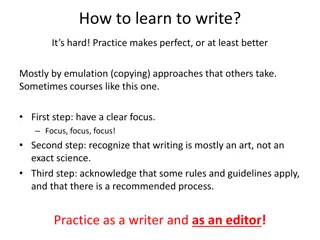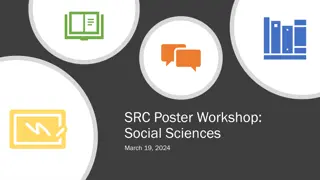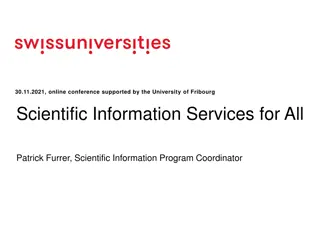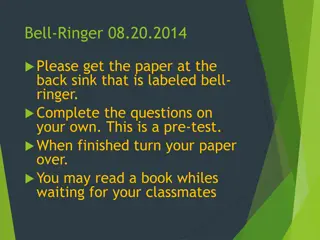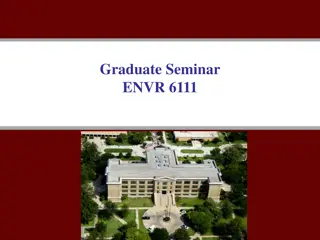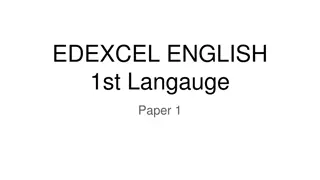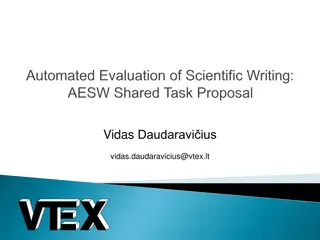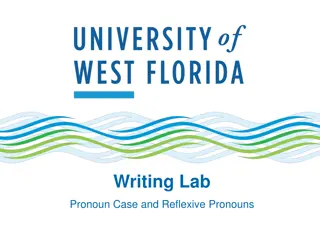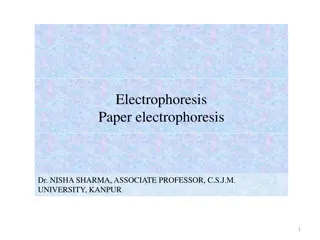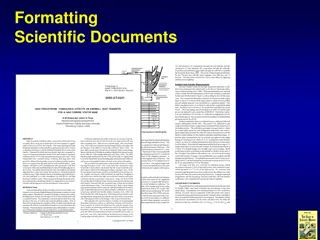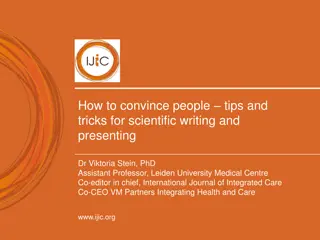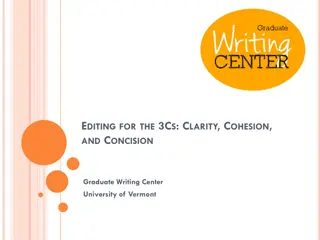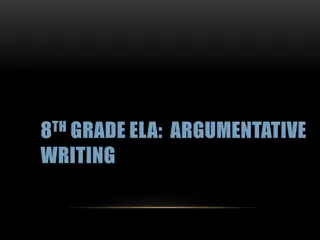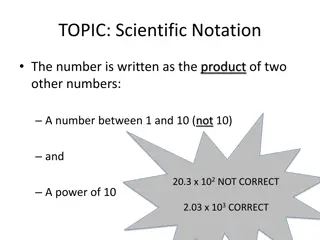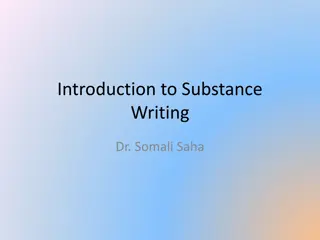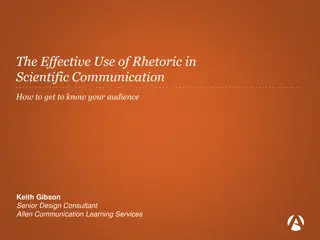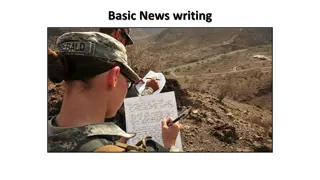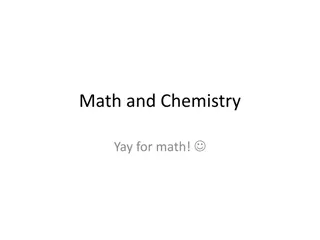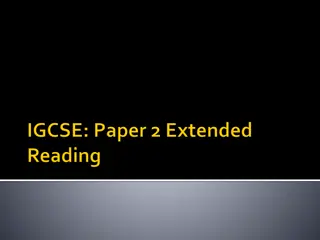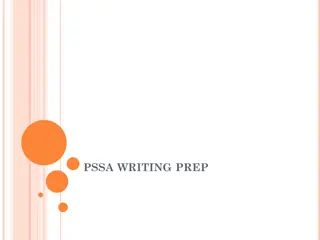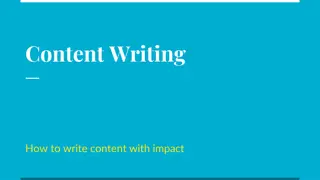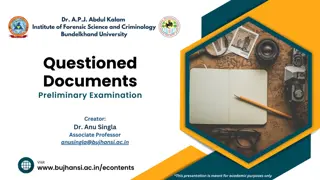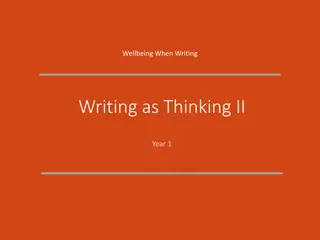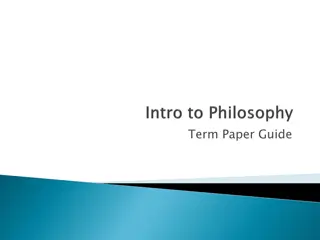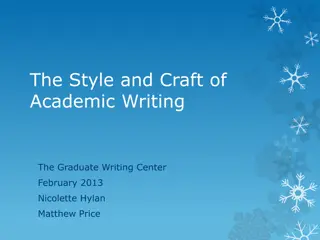Mastering Scientific Paper Writing: Essential Steps & Strategies
Dive into key aspects of writing a scientific paper and research proposal, exploring research stages, paper writing techniques, quality enhancement strategies, plagiarism control, proposal construction, and professional researcher traits.
Download Presentation

Please find below an Image/Link to download the presentation.
The content on the website is provided AS IS for your information and personal use only. It may not be sold, licensed, or shared on other websites without obtaining consent from the author. Download presentation by click this link. If you encounter any issues during the download, it is possible that the publisher has removed the file from their server.
E N D
Presentation Transcript
HOW TO WRITE A SCIENTIFIC PAPER AND RESEARCH PROPOSAL 1 By Prof. Olufunke Rebecca Vincent (Prof. of Artificial Intelligence ) Tel: +2347037832842 vincentor.com vincentor@funaab.edu.ng vincent.rebecca@gmail.com 10/6/2024
CONTENT 2 What is a Research? And What is a Scientific Paper? Stages involved in research Writing research paper Strategies for enhancing the quality of research papers Plagiarism Control Writing a research proposal Standing Tall as a researcher Conclusion 10/6/2024
Meaning of Research? 3 Simply refers to as a search for knowledge A careful investigation or inquiry specially through search for new facts. An art of scientific investigation The scientific creation or development of new idea, technique, object or system An academic activity provable and valid solutions to problems. that involves providing 10/6/2024
What is a Scientific Paper? 4 A communicable written massage of the results of a particular research. Scientific papers (journal articles) are a special type of written work that have particular characteristics: usually published in a periodical called a journal Peer reviewed Citable Include citations Follow a standardized style of writing and data presentation. 10/6/2024
Writing Research Article 5 The general outline/flow of a scientific paper is as follows: Title Abstract and keywords Section 1: Introduction/Background Section 2: Literature Review:Related Work/Related models Section 3: Materials and Methodology Section 4: Result, Discussion and Evaluation Section 5: Conclusion/Concluding Remarks References 10/6/2024
Why Research? 6 Review or synthesize existing knowledge Investigate existing situations or problems Provide solutions to problems Explore and analyse more general issues Create new procedures or systems Explain new phenomenon Generate new knowledge (Collis & Hussey, 2014) 10/6/2024
Research and People 7 To students (MSc. or Ph.D), research may mean a career or a way to attain higher positions To professionals in research methodology - a source of livelihood To literary men and women - development of new styles and creative work To intellectuals, researchers and academics - development of new theories, ideas, solutions, products 10/6/2024
Research Methodology Areas 8 Investigating Analysing Confirming Designing Testing Evaluating Predicting 10/6/2024
Stages Involved in Research Methodology 9 Conceptualisation Actualisation Implementation and Evaluation Conclusion 10/6/2024
(i)Conceptualisation Stage 10 Research determination Material gathering and knowledge acquisition Article databases at libraries (i.e., ELSEVIER, SPRINGER HINARI, IEEE, ACM, etc.) Search services, i.e.,Google scholar, Summon, CiteSeer (http://citeseerx.ist.psu.edu) Study related materials Itemise existing programme State research problems/motivation Set research objectives 10/6/2024
(ii) Actualisation Stage 11 Design considerations What strategies/components are you introducing Develop your scientific methodology Identify techniques to be adopted Improve on existing methods or develop a new method Definitions, axioms, expressions, etc Architecture, model. Formally and logically describe the components. Ensure novelty 10/6/2024
(iii) Implementation and Evaluation Stage 12 Translate the method into a working system Develop a scientific simulation or experimental procedure Test the new system with widely accepted public dataset Analyse and present the results in form of diagrams, graphs, etc. Compare the results with existing results 10/6/2024
(iv) Conclusion Stage 13 Summary of results Recommendations Contributions to knowledge Future work Conclusion 10/6/2024
Requirements for M.Sc. and Ph.D. Theses 14 B.Sc. Adhere strictly to instructions from your supervisor Learn everything about that area of your project M.Sc. Realise at least one major objective Publish an article Ph.D. Contributions to knowledge Realise 2 to 3 objectives Publish 2 to 3 articles 10/6/2024
15 Scholarly articles can be of different types: Original articles present the new results of research Review articles are critical evaluations of other published studies. Theoretical articles develop new theories from already existing research. Usually about 10 to 30 pages depending on the journal For Letters, it is about 4-10 pages 10/6/2024
Types of Academic Research 16 Conference and workshop papers Full papers (around 10 -20 pages) Short papers (around 5 pages) Poster sessions Work-in-progress Technical reports Published at a university/company/Lab/Institute, not usually reviewed. 10/6/2024
17 Case studies Position paper Magazines Antithesis An argument to challenge a previous thesis. Synthesis Resolve the apparent contradiction between a thesis and an antithesis. 10/6/2024
Preambles before writing 18 Before writing an article (report of scientific research) Construct good and inviting English Expressions Sequential and logical writing extra work is required. Get yourself familiar with articles from high quality and premium journals Study the mode of writing Understand the ways of writing 10/6/2024
Title 19 The title provides the lead Needs to be interesting The title must be concise, clear and unambiquos Catchy and indicative of your research contribution The shorter a paper title, the better its acceptance chances 10/6/2024
Abstract 20 What is Abstract? Abstract is simply a logical summary of the work done A good Research Abstract is structured as : S/N S/No. No. of sentences 1. 2. 3. 4. 5. 6. Introduction Problems addressed Methodology Implementation/simulation procedure Evaluation of results Conclusion 1 1-2 3-4 1-2 2-3 1 10/6/2024
Abstract contd.... 21 Should not be too wordy Maximum number of words always required (150) Avoid references and acronyms. Use the Abstract to sell your paper Keywords 4 to 5 keywords are usually added to identify the contents of the article. Highlights (sometimes) or Graphical summary 4 to 5 captivating sentences required 10/6/2024
Writing Introduction 22 The first paragraph must consist of the best set of sentences you can ever put together There should be a flow, such as:- 2 sentences of introduction of concepts/significance of the research area Problem(s)/ Motivation Attempts by others/other methods Advs. and limitations of their methods Presentation of the work & short method Contributions of the work 10/6/2024
Literature Review 23 40% of the reviewed articles should be current Related approaches are captured References are locatable Comparable with previous work. Clearly clarify differences in results (Previous & yours). Review related articles o Problem solved .Methods used Future work .identified problems/limitations .Results 10/6/2024
Methodology 24 How did you solve the identified problem(s)?: Models, Tests, procedures, methods, experiments, processes, proofs, algorithms, formal methods, etc. No frivolous discussions Be logical and precise Ensure correctness and completeness Do not describe dead ends 10/6/2024
Implementation and Evaluation 25 Clearly present your results Report your choice of programming languages and other tools used Discuss the appriopriateness evaluation environment and datset used Compare your results with previous work Use logical diagrams, graphs, figures, charts, etc. for your presentations 10/6/2024
Conclusion 26 Summary of results and contributions Discuss the significance Interpretation of the work: pros & cons. Limitations of the solution Suggestions for Future Work . Recommendations 10/6/2024
Citations 27 Generally, citation is a reference to published and unpublished work. It is an abbreviated expression embedded in the body of an intellectual work. Three main reasons for adequate citations are:- To show relevance materials were consulted To uphold intellectual honesty To avoid plagiarism 10/6/2024
Biblography and References 28 A bibliography- all existing work consulted, not minding whether the authors are quoted or not. It consists of works read for general understanding A reference list should include only work quoted/ cited/referred. Both Refs. & Bibliog. must be in alphabetical order and be structured strictly according to specified format. 10/6/2024
Referencing Styles 29 common ones are:- Havard MLA, developed by Modern Language Association. Most used in arts and humanities American Sociological Association (ASA) American Psychological Association (APA). e.g. 6th edition is the latest. (Vincent, 2017) for one author (Vincent and Lawal, 2017) for two authors (Vincent et al., 2014) for more than two authors 10/6/2024
Publishing in desired premium journal: 30 Elsevier, Springer, ACM, IEEE, Emerald, Taylors and Series, etc. to appear in Scopus & Web of Science Carefully study the requirements of the journal The method must be formal and sound The general presentation must be of high quality Read more of articles already published by the journal Use and reference articles published by the journal Do not be discourage by initial reviewers comments 10/6/2024
Plagiarism Control 31 Check with available plagiarism tools (Vplagiarism Checker X (www.plagiarismcheckerx.com/download.php), Viper, turnitin, small SEO Tool (www.smallseotools.com), grammarly, etc.) Turnitin Acceptable level Not more than 24% of similarity index 10/6/2024
Are you standing tall? 32 Research impact and productivity metrics h-index (Hirsch, 2005): An index that attempts to measure both the productivity and citation impact of the published work. Google Scholar (scholar.google.com/citations) Other productivity and impact metrics are i10, G-index http://academic.research.microsoft.com Publish or Perish A software program that is used to evaluate academic research citations 10/6/2024
Academic interactions 33 Research gate Social network for researchers For sharing research knowledge and interaction Launched in 2008 by Ijad Madisch http://researchgate.net/ Linkedln www.linkedin.com For business and professional networking 10/6/2024
Conclusion 34 The global economy is changing As other mature economies are striving to become more innovative and productive, Nigeria is also facing more intense competition from emerging countries that are seeking to move up the value chain. To facilitate the development of an inclusive, globally competitive, prosperous and knowledge- driven Nigeria, there is need for huge investment in R&D by all stakeholders 10/6/2024
Biblography 35 Edwin D. R. (2004). Concise Encyclopaedia of Computer Science. John Wiley. Edmund T. (2013). The Visual Display of Quantitative Information. Graphics Press, USA. Ehtiram R. K. and Huma A. (2016). Research Methods of Computer Science, India. Martin S. O. (2009). Information Technology Research: A Practical Guide for Computer Science and Informatics. Van Schaik, South Africa. Thomas N. H. and Leslie A. O. (2011). Technical Writing and Professional Communication for Nonnative Speakers of English. McGraw-Hill, New York, USA Wohlin, C., Runeson, P., H st, M., Ohlsson, M.C., Regnell, B., Wessl n, A. (2014). Experimentation in Software Engineering. Springer-Verlag Berlin Heidelberg, USA. 10/6/2024
36 Artificial Intelligence: - Brain models, Brain mapping, Cognitive science - Natural language processing - Fuzzy logic and soft computing - Software tools for AI - Expert systems - Decision support systems - Automated problem solving - Knowledge discovery - Knowledge representation - Knowledge acquisition - Knowledge-intensive problem solving techniques - Knowledge networks and management - Intelligent information systems - Intelligent data mining and farming - Intelligent web-based business - Intelligent agents - Intelligent networks 10/6/2024
37 Intelligent databases - Intelligent user interface - AI and evolutionary algorithms - Intelligent tutoring systems - Reasoning strategies - Distributed AI algorithms and techniques - Distributed AI systems and architectures - Neural networks and applications - Heuristic searching methods - Languages and programming techniques for AI - Constraint-based reasoning and constraint programming - Intelligent information fusion - Learning and adaptive sensor fusion - Search and meta-heuristics - Multisensor data fusion using neural and fuzzy techniques - Integration of AI with other technologies - Evaluation of AI tools - Social intelligence (markets and computational societies) - Social impact of AI - Emerging technologies 10/6/2024
38 Machine Learning; Models, Technologies and Applications: - Statistical learning theory - Unsupervised and Supervised Learning - Multivariate analysis - Hierarchical learning models - Relational learning models - Bayesian methods - Meta learning - Stochastic optimization - Simulated annealing - Heuristic optimization techniques - Neural networks - Reinforcement learning - Multi-criteria reinforcement learning - General Learning models - Multiple hypothesis testing 10/6/2024
39 - Decision making - Markov chain Monte Carlo (MCMC) methods - Non-parametric methods - Graphical models - Gaussian graphical models - Bayesian networks - Particle filter - Cross-Entropy method - Ant colony optimization - Time series prediction - Fuzzy logic and learning - Inductive learning and applications - Grammatical inference - Graph kernel and graph distance methods - Graph-based semi-supervised learning - Graph clustering 10/6/2024
40 Graph learning based on graph transformations - Graph learning based on graph grammars - Graph learning based on graph matching - Information-theoretical approaches to graphs - Motif search - Network inference - Aspects of knowledge structures - Computational Intelligence - Knowledge acquisition and discovery techniques - Induction of document grammars - General Structure-based approaches in information retrieval, web authoring, information extraction, and web content mining - Latent semantic analysis - Aspects of natural language processing - Intelligent linguistic - Aspects of text technology - Biostatistics - High-throughput data analysis - Computational Neuroscience - Computational Statistics 10/6/2024
Writing a Good Research Proposal 41 Title Thematic Area Background to the research Statement of the problem Objective of the Research Research Question Literature Review Theoretical Framework Research methodology Expected Result Innovation Expected Budget References 10/6/2024
42 NCC TETfund: (IBR and NFR) Bill & Melinda Gates Foundation Grants. ... Center for International Private Enterprise (CIPE) Grant. ... Africa Enterprise Challenge Fund (AECF) grants. ... United States African Development Foundation (USADF) ... Ford Foundation grants. ... The Rockefeller foundation grants, etc TWAS 10/6/2024
43 THANK YOU THANK YOU 10/6/2024


